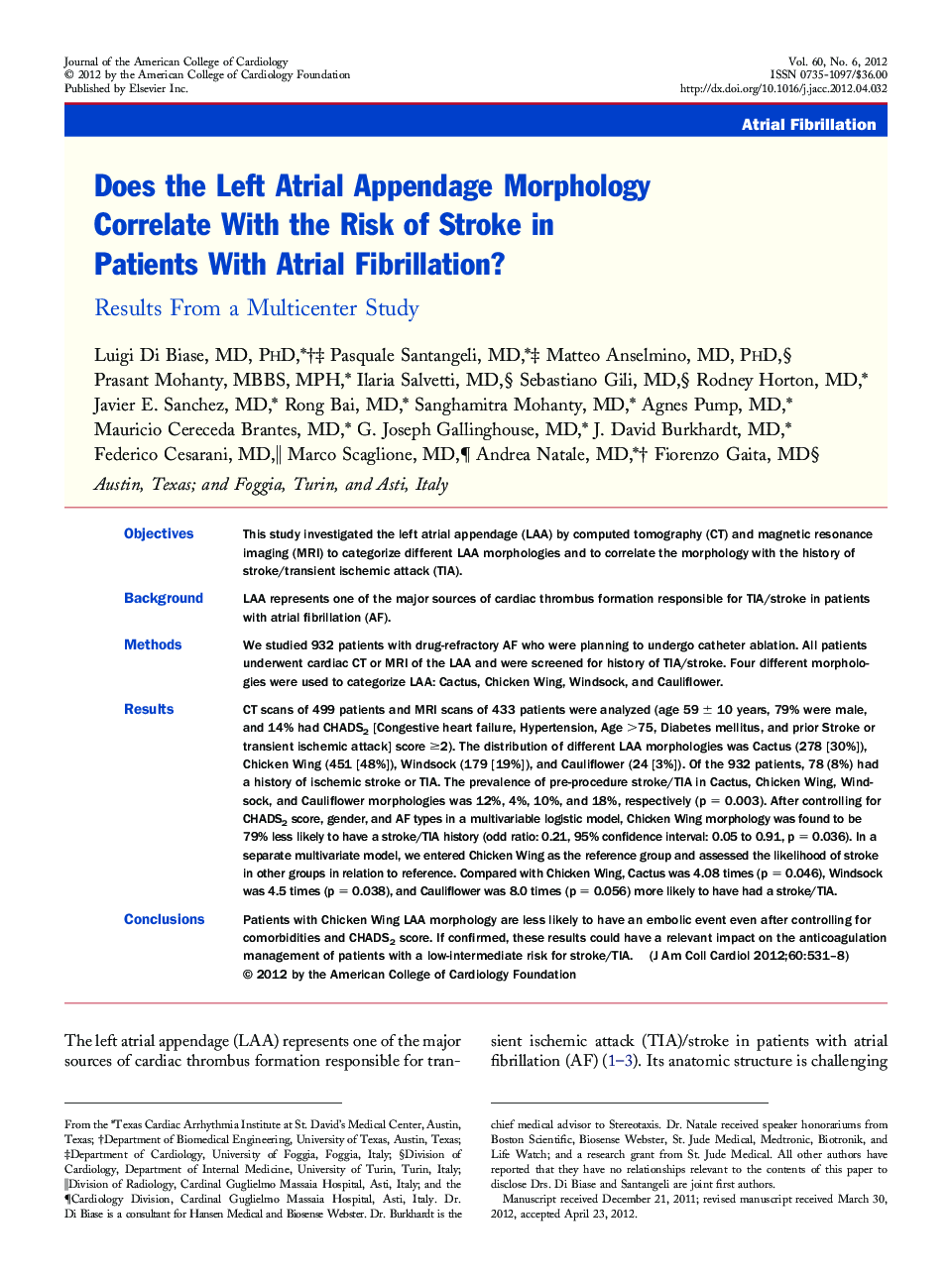| کد مقاله | کد نشریه | سال انتشار | مقاله انگلیسی | نسخه تمام متن |
|---|---|---|---|---|
| 2947176 | 1577200 | 2012 | 8 صفحه PDF | دانلود رایگان |

ObjectivesThis study investigated the left atrial appendage (LAA) by computed tomography (CT) and magnetic resonance imaging (MRI) to categorize different LAA morphologies and to correlate the morphology with the history of stroke/transient ischemic attack (TIA).BackgroundLAA represents one of the major sources of cardiac thrombus formation responsible for TIA/stroke in patients with atrial fibrillation (AF).MethodsWe studied 932 patients with drug-refractory AF who were planning to undergo catheter ablation. All patients underwent cardiac CT or MRI of the LAA and were screened for history of TIA/stroke. Four different morphologies were used to categorize LAA: Cactus, Chicken Wing, Windsock, and Cauliflower.ResultsCT scans of 499 patients and MRI scans of 433 patients were analyzed (age 59 ± 10 years, 79% were male, and 14% had CHADS2 [Congestive heart failure, Hypertension, Age >75, Diabetes mellitus, and prior Stroke or transient ischemic attack] score ≥2). The distribution of different LAA morphologies was Cactus (278 [30%]), Chicken Wing (451 [48%]), Windsock (179 [19%]), and Cauliflower (24 [3%]). Of the 932 patients, 78 (8%) had a history of ischemic stroke or TIA. The prevalence of pre-procedure stroke/TIA in Cactus, Chicken Wing, Windsock, and Cauliflower morphologies was 12%, 4%, 10%, and 18%, respectively (p = 0.003). After controlling for CHADS2 score, gender, and AF types in a multivariable logistic model, Chicken Wing morphology was found to be 79% less likely to have a stroke/TIA history (odd ratio: 0.21, 95% confidence interval: 0.05 to 0.91, p = 0.036). In a separate multivariate model, we entered Chicken Wing as the reference group and assessed the likelihood of stroke in other groups in relation to reference. Compared with Chicken Wing, Cactus was 4.08 times (p = 0.046), Windsock was 4.5 times (p = 0.038), and Cauliflower was 8.0 times (p = 0.056) more likely to have had a stroke/TIA.ConclusionsPatients with Chicken Wing LAA morphology are less likely to have an embolic event even after controlling for comorbidities and CHADS2 score. If confirmed, these results could have a relevant impact on the anticoagulation management of patients with a low-intermediate risk for stroke/TIA.
Journal: Journal of the American College of Cardiology - Volume 60, Issue 6, 7 August 2012, Pages 531–538